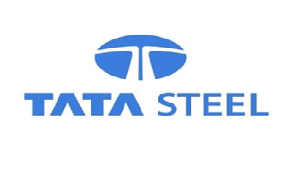
Tata Steel to Cut Capex for FY20, Simplify Corporate Structure

He further said Tata Steel was in the process of simplifying its corporate structure and that the company was looking at creating a downstream company for many of its downstream assets.
Keeping in mind the slowdown and reduced cash flows, Narendran said, “We said at the analysts call a few days call that we will certainly recalibrate some of the capex. And that it will be lower than what it had originally been planned between Europe and India.
Tata Steel’s original plan was around INR 12,000 crore for the Tata Steel Group but it will now be reduced to INR 8,000 crore for the current fiscal.
Narendran said that in the INR 12,000 crore capex originally planned, roughly INR 8,000 crore was for India and INR 4,000 crore in Europe. “Both sides will take a cut, I do not want to be very specific. It would be fair to say the cut would be straight, at least equal on both sides,” he said.
The India capex is mostly focused on Kalinganagar, he said, adding that, the company we continue with the Kalinganagar project but said, “We have a way to prioritise. So we will be focusing on the cold rolling mill which adds value without adding volume. Basically, value adding to the steel that you already have. We will give priority to the pellet plant because that gives us some cost benefit. So, basically, the multiple capital data-x-items we spend capital on are prioritised,” he added.
Corporate restructure
Coming to the simplification of the corporate structure, he said there were a lot of subsidiaries in Europe and many of them created over a period of time. At one point in time, there were almost 200-300 legal entities and subsidiaries of Tata Steel Europe, which have been reduced significantly. “We are reducing another 100-120 this year. That will still leave us with a lot but still that is one level of simplifying,” he said.
In India, he said, it is more about bringing the operating subsidiaries together, referring to the acquisition of Usha Martin steel business by Tata Sponge and the name change of the latter to Tata Steel Long Products. “That becomes a vehicle for long products growth and any further consolidation that we do in long products,” he said.
“Similarly, we are looking at creating a downstream company for many of our downstream assets. May be an infrastructure and utilities company for our infrastructure and utility assets. May be, a mining company for our mining assets as well as to explore opportunities in commercial mining. So, instead of having the 30-odd subsidiaries that we had, we will have fewer subsidiaries, we will be more consolidated, derive the synergy benefits,” he stressed.
Debt reduction
Talking about the debt reduction plan, post the failed ThyssenKrupp deal, he said, “Even though the Thyssenkrup deal did not happen due to regulatory issues, we were focused on two things. One, was running Europe as a cash positive business. So even if EBIDTA got compressed, those were the levers we were working on. And second, from Tata Steel’s point of view, we had given a guidance that we will reduce debt by a billion dollar. The number is becoming more and more difficult by the day but we have not given up on it yet,” Narendran said.



Trump weighs using $2 billion in CHIPS Act funding for critical minerals

Codelco cuts 2025 copper forecast after El Teniente mine collapse

Electra converts debt, launches $30M raise to jumpstart stalled cobalt refinery

Barrick’s Reko Diq in line for $410M ADB backing

Abcourt readies Sleeping Giant mill to pour first gold since 2014

Nevada army depot to serve as base for first US strategic minerals stockpile

SQM boosts lithium supply plans as prices flick higher

Viridis unveils 200Mt initial reserve for Brazil rare earth project

Tailings could meet much of US critical mineral demand – study

Kyrgyzstan kicks off underground gold mining at Kumtor

Kyrgyzstan kicks off underground gold mining at Kumtor

KoBold Metals granted lithium exploration rights in Congo

Freeport Indonesia to wrap up Gresik plant repairs by early September

Energy Fuels soars on Vulcan Elements partnership

Northern Dynasty sticks to proposal in battle to lift Pebble mine veto

Giustra-backed mining firm teams up with informal miners in Colombia

Critical Metals signs agreement to supply rare earth to US government-funded facility

China extends rare earth controls to imported material

Galan Lithium proceeds with $13M financing for Argentina project

Kyrgyzstan kicks off underground gold mining at Kumtor

Freeport Indonesia to wrap up Gresik plant repairs by early September

Energy Fuels soars on Vulcan Elements partnership

Northern Dynasty sticks to proposal in battle to lift Pebble mine veto

Giustra-backed mining firm teams up with informal miners in Colombia

Critical Metals signs agreement to supply rare earth to US government-funded facility

China extends rare earth controls to imported material

Galan Lithium proceeds with $13M financing for Argentina project

Silver price touches $39 as market weighs rate cut outlook

















